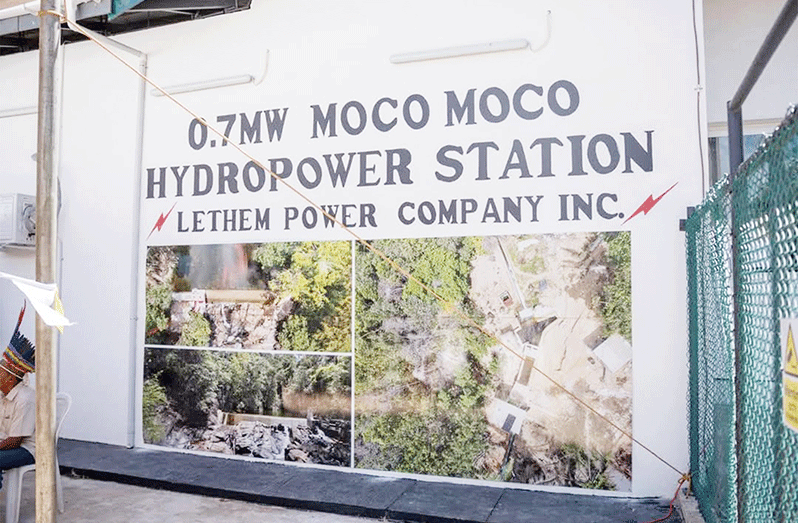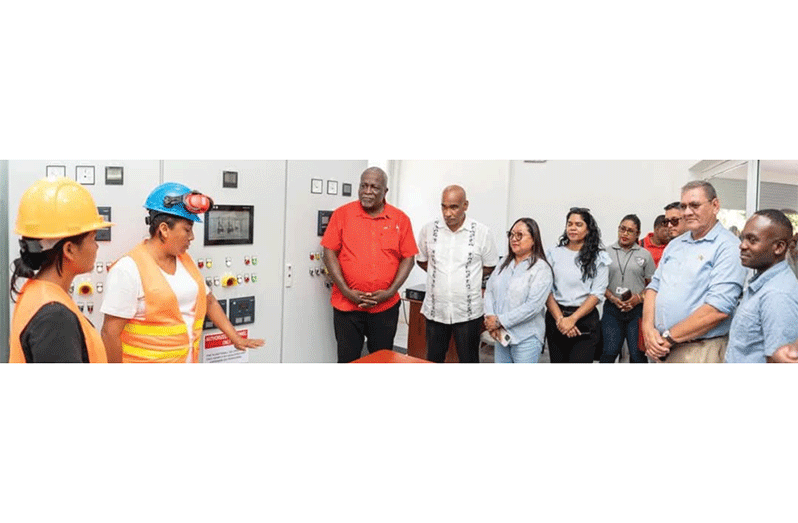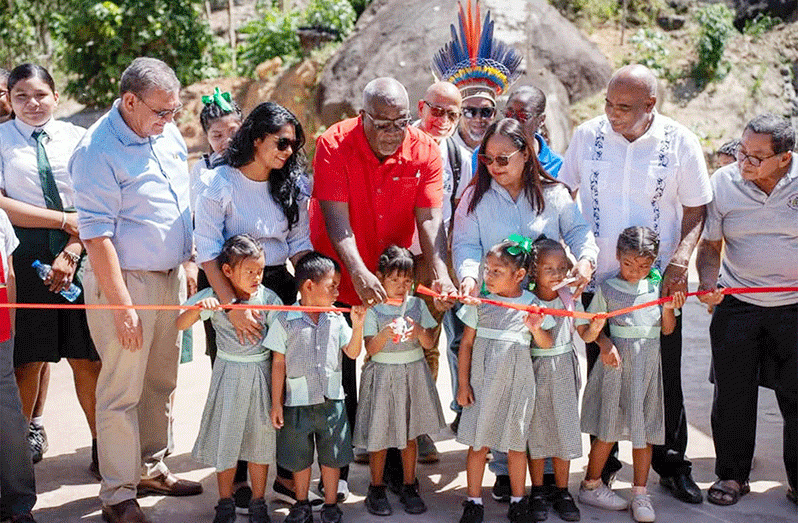–Prime Minister Phillips declares after commissioning landmark Moco Moco project
PRIME Minister, Brigadier (Ret’d) Mark Phillips officially commissioned the 0.7 MW Moco Moco Hydropower Plant on Friday, marking a transformative milestone for Region Nine’s energy landscape.
He emphasised the project’s pivotal role in bridging the energy divide, a cornerstone of the government’s commitment to equitable development under its “One Guyana” vision.
“This is another example of us delivering on our promise to bridge the development divide. More particularly, what we’re doing is bridging the energy divide,” he said.
The Prime Minister underscored that the symbolic and practical significance of revitalising this long-dormant facility represents a broader effort by the government to ensure that all regions, including hinterland communities, benefit from its broader developmental agenda particularly its pursuance of an energy mix which features renewable energy at the fore.

“You’re making history,” the Prime Minister declared, “because, for the first time in our country’s history, we have a hydro-power plant, solar farm, and diesel generators working together to provide energy, and this is happening for the first time in Region Nine right here.”
The Prime Minister detailed how the newly recommissioned hydropower plant, now contributing 0.7 MW of power, integrates with Region Nine’s existing energy infrastructure.
The region now boasts a sophisticated energy system, combining the hydropower plant with a 1 MW solar farm and 2 MW diesel generators, delivering a total capacity of 3.7 MW. This capacity is set to increase to an impressive 5.2 MW by February 2025, with the addition of the Kumu Hydropower Plant.
“In Lethem, at your maximum capacity right now, you are only using two megawatts. You will have almost two-and-a-half times the amount of electricity that you can use right now. This is the development that we’re talking about; bridging the divide, the development divide, and we have successfully bridged the energy divide with this one project,” the PM said.

The Prime Minister reaffirmed the government’s dedication to the Low-Carbon Development Strategy (LCDS) 2030, and reminded of the ambitious goals for renewable energy adoption.
“By 2030, there’ll be greater use of renewable energy in Guyana,” he said, adding:
“Most of the energy; more than 50 per cent of our energy, by 2030, will come from the sun, will come from hydro (from water), will come from wind, as much as possible, less energy from fossil fuel, more from mother nature.”
NEW SOLAR MINI-GRIDS
Further demonstrating this commitment, the Prime Minister announced the Cabinet’s recent approval of four new solar mini-grids for the communities of Yupukari, Nappi, and Awaruwaunau in Region Nine (Upper Takutu-Upper Essequibo) and Paramakatoi, in Region Eight (Potaro-Siparuni).
And, speaking of driving the economic growth in the region through the energy that is now available, Prime Minister Phillips urged the residents of Region Nine to capitalise on the opportunities created by the high levels of electricity, while highlighting the potential for cottage industries, particularly in agro-processing, to boost local economies.
“Start cottage industries; monetise what you already have,” he encouraged. “The wastage of mangoes and cashews can be turned into products in demand locally and internationally. This is how we create economic value from our resources.”
The Prime Minister also stressed the importance of modernising agricultural practices to enhance productivity and achieve food security.
He said that by utilising the energy and integrating technology, such as irrigation systems, communities can overcome the challenges of climate variability contributing to their ability to become food secure and earn revenues.
He pointed to the government’s role as a facilitator of development, as he emphasised the collaborative approach needed to maximise these opportunities. “We have to put our brains together at the village council level, at the individual level, homes, and with your neighbours, form ourselves into groups, pool our resources, utilise this energy and make it work for us to improve our lives and livelihoods,” he said.
Addressing the younger generation, Prime Minister Phillips focused on the critical importance of STEM education, saying: “You are the future of Guyana. I want you to focus your effort, your studies, on STEM (Science, Technology, Engineering and Mathematics). That’s going to help us to make the great leap into modernity.”
Residents were also assured that electricity rates will remain unchanged, reaffirming the government’s commitment to affordable energy, and linking renewable energy development to community benefits.
Beyond energy, the Prime Minister also pointed out that the government is making strides in bridging the digital divide, as he highlighted the deployment of Lower Earth Orbit (LEO) satellite devices in hinterland communities, which have vastly improved connectivity. This enhanced connectivity will play a crucial role in education, business, and governance, further empowering the people of Region Nine.
‘You’re making history, because, for the first time in our country’s history, we have a hydro-power plant, solar farm, and diesel generators working together to provide energy, and this is happening for the first time in Region Nine right here’ – PM Phillips



.jpg)









